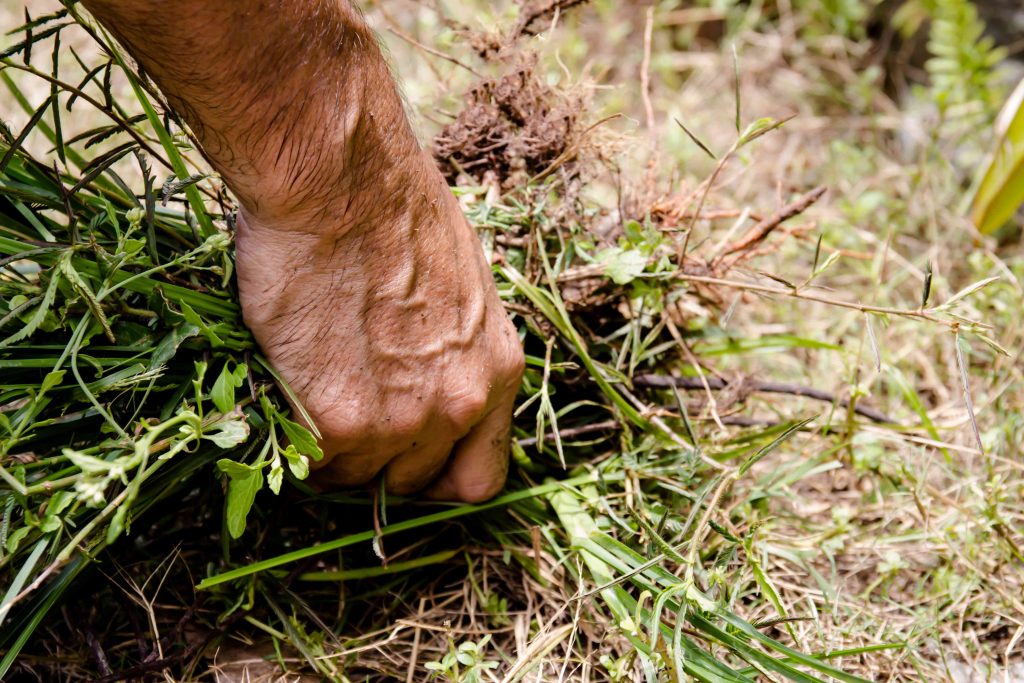Grass weeds are a major problem for gardeners. They can wreak havoc on the appearance of your lawn, and they can cause problems with water drainage. In some cases, grass weeds can even affect the health of your plants. If you’re new to gardening, it might seem like a daunting task to weed your whole lawn. But there’s hope! We’ll show you how to get rid of these pesky plants in just a few simple steps! Also, there are 10 things to know when pulling weeds.
Pulling weeds is a lot like pulling teeth.
It’s hard, dirty work that no one likes to do. It feels good when you’re done but the satisfaction doesn’t last long because it’s back to business as usual and all of those pesky weeds are still there waiting for their chance to take over your garden again.
And while you’re at it, everything else in your yard will start looking shabby too because weeding is really about tending to the entire landscape, not just that small patch of dirt where the offending weed happened to sprout up this week. But if you don’t weed regularly, before long your lawn will be nothing but crabgrass and dandelions with patches of brown grass here and there.
# 1 Pull Weeds As Soon As Possible
Weeds are a gardener’s worst nightmare. They grow quickly, choking out the flowers and vegetables that you’ve planted, and can be hard to get rid of. More importantly, they also compete for water with your plants so if left unchecked they will eventually kill them all off. This is why it is important to start weeding as soon as possible in order to prevent any weeds from taking over your garden.
# 2 Pull Out the Roots
Pulling weeds is one of the most frustrating and time-consuming gardening tasks. Long gone are the days when we could just grab a few, yank them out by their roots, and be done with it. Nowadays, many weeds have deep roots that don’t come up easily at all. And some weed species can even grow back from small pieces left in the soil! So what should you do? There are two things to remember: always wear gloves so you don’t get prickly sensations on your hands and break off any parts of the weed’s plant structure that may remain in the ground, and use a sharp object like a screwdriver or pointed knife to pry up stubborn plants that refuse to budge.
# 3 Use Tools
Weeds in the garden are not a good thing. They steal water, nutrients and light from your plants, and can cause serious problems when they spread to other parts of the yard. One way to keep weeds at bay is by using tools that make it easier for you to pull them out by hand or cut them off close to the ground with a sharp blade. There are many different types of weeding tools on the market today: some are designed specifically for weeding vegetables; others are made for weeding flowers or landscaping beds. It’s important to choose carefully so you get exactly what will work best in your garden and save yourself time and effort down the line.
# 4 Use Herbicides
Herbicides can help you get rid of these pesky plants that often pop up on your lawn or on the side of your house. These chemicals come in many forms, from granules to liquids to oil-based sprays. They all work by killing weeds at their roots so they won’t grow back again. But keep in mind that this is not a quick fix – it typically takes three weeks before you see any results!
# 5 Types of Herbicides
Herbicides are a diverse group of chemicals used to kill weeds. All herbicides must be approved by the Australian Pesticides and Veterinary Medicines Authority (APVMA) before they can be marketed for sale or use in Australia. The APVMA regulates some chemical ingredients and provides guidance on others, but not all of them. It is important to know what type of herbicide you have because different types will affect your environment differently.
Types of Herbicides: There are many different types that include non-selective, selective, contact killers, systemic killers, and translocated killing agents. Non-selective herbicides will eliminate any plant it comes into contact with while selective ones only affect specific plants such as grasses or broadleaf weeds depending on their active ingredient.
# 6 Cut, Cut, Cut
Weeds are a pain, but they can be cut down. In order to do so you have to know the weed’s weaknesses and strengths. You also should take into account which method of cutting is best for your garden at this time. There are many different types of weeds that you may come across in your journey as a gardener, each with its own set of characteristics and needs when it comes to being cut down. For example, dandelions will grow back if left alone or pulled up by hand while crabgrass has a head that must be dug out from under the ground before it can grow another one. Weeds are not all alike and should not be treated the same way; you need to find out what type of tools you need to use when cutting them.
# 7 Scorch Them
One option is using boiling water which will kill many of the plant’s roots but can also leave behind something called ‘root rot’. This disease spreads easily through the soil which has been left wet after being soaked by rain or irrigation systems. Another way to kill them is by applying ethanol, which can be used as a spray, mixed with water and applied to the weeds with a brush or paintbrush. The ethanol will need 24-48 hours to dry before weeding. Another way to weed kill them is by using propane torches that are lit on the weed itself or on the dirt near it. These methods should not be used on areas that contain high amounts of organic material because it will set the organic material on fire-this includes grass, leaves, pine needles, sticks, etc.
# 8 Till Occasionally
The benefits of no-till gardening are many. A gardener has the ability to grow more food by making better use of their resources. There is less energy and water needed for this type of gardening. This method also reduces the amount of soil erosion and runoff that would be caused by ploughing. No-till gardening can also benefit gardeners by decreasing their workload because less weeding, irrigation, and harvesting need to take place.
# 9 Landscape Fabric Can Help Too
Landscape fabric is a woven, nonwoven, or knitted material of various weights used to suppress weeds on the surface of the soil. It is composed of varying amounts of natural and synthetic fibres. Landscape fabric has two main functions: resisting weed growth through physical suppression and providing moisture retention by reducing water runoff.
# 10 Plan When You Pull Out the Weed
The best time to go after these pests is when the ground is moist because this will soak up any juices left behind by your weed killer. When the ground dries out, later on, these liquids evaporate and leave nothing but dead plant material behind. This leaves no chance for new weeds to sprout.
So, these are the 10 things to know when pulling weeds. Weeding involves planning and a little research to save you all the trouble of having a garden full of weeds. Another easy way to solve weed problems is to get services from reputable landscaping and gardening companies, like A1 Gardening Sydney. For more information, click here.

